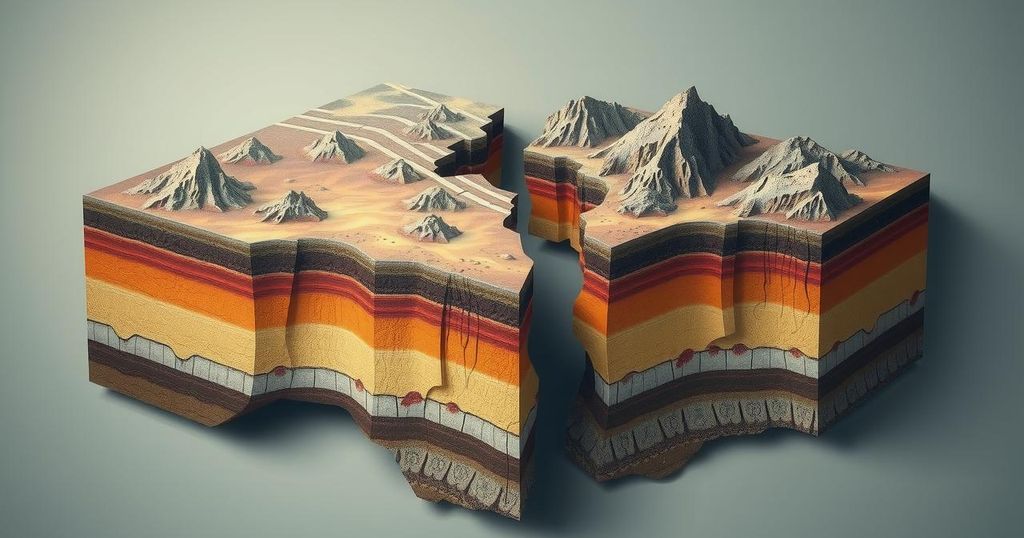An international research team led by the University of Göttingen has discovered that the Neotethys oceanic plate beneath Turkey and Iran is breaking off horizontally, contributing to sediment accumulation in the region. This paper explores the geological processes causing Earth’s surface to bend due to the weight of the Zagros Mountains, proposing that the sinking oceanic plate adds to the downward force influencing land depression.
Recent research from an international team headed by the University of Göttingen has uncovered that the Neotethys oceanic plate is currently breaking off horizontally beneath Turkey and Iran, creating a tear that extends from southeast Turkey to northwest Iran. This study examines how geological forces, associated with the Zagros Mountains in Iraq, have influenced the Earth’s surface deformation over the last 20 million years. The findings, published in the journal Solid Earth, provide insights into the complex geological processes occurring beneath the Earth’s surface.
As continental collisions occur over millions of years, the intervening oceanic floors subside beneath the continents. This process leads to the uplifting of rocky masses, forming significant mountain ranges. The immense weight of these formations results in a downward bending of the Earth’s surface, with eroded sediments from the mountains pooling in the resulting depressions, exemplified by the Mesopotamian plains.
The researchers employed modeling techniques to analyze the downward bowing of the Earth’s surface due to the Zagros Mountains’ weight, where the Arabian plate interacts with the Eurasian continent. Nevertheless, they concluded that the gravitational influence of the mountains alone could not fully explain the pronounced 3-4 km deep depression filled with sediment in the southeastern study area, identified over the last 15 million years.
Dr. Renas Koshnaw, the lead author of the study, expressed surprise at the significant accumulation of sediment observed in a region with moderate topography. Koshnaw indicated, “This means the depression of the land is greater than could be caused by the load of the Zagros Mountains.” Researchers hypothesized that the downward force of the sinking oceanic plate attached to the Arabian plate is contributing to this phenomenon, facilitating a space for additional sediment deposit.
Additionally, the study’s geodynamic model is poised to aid multiple disciplines. Dr. Koshnaw articulated that the research enhances the understanding of the Earth’s outer shell dynamics. This advancement may have practical applications concerning the exploration of natural resources, including sedimentary ore deposits and geothermal energy, as well as better earthquake risk assessment.
This research focuses on the Neotethys oceanic plate, which represents the ocean floor between the Arabian and Eurasian continents, now exhibiting horizontal breakage. Understanding this geological phenomenon is crucial for appreciating the dynamics of tectonic movements associated with mountain formations and sediment accumulation over extended time periods. The study sheds light on the processes affecting the Earth’s surface due to deep geological formations, which are central to various geological studies and applications.
The study reveals the complex interplay between tectonic forces and sediment accumulation in the region around the Zagros Mountains, emphasizing that significant geological changes occur deep within the Earth’s subsurface. The findings underscore the need for a comprehensive understanding of these dynamics and their consequences for natural resource exploration and earthquake risk assessment.
Original Source: www.technologynetworks.com






